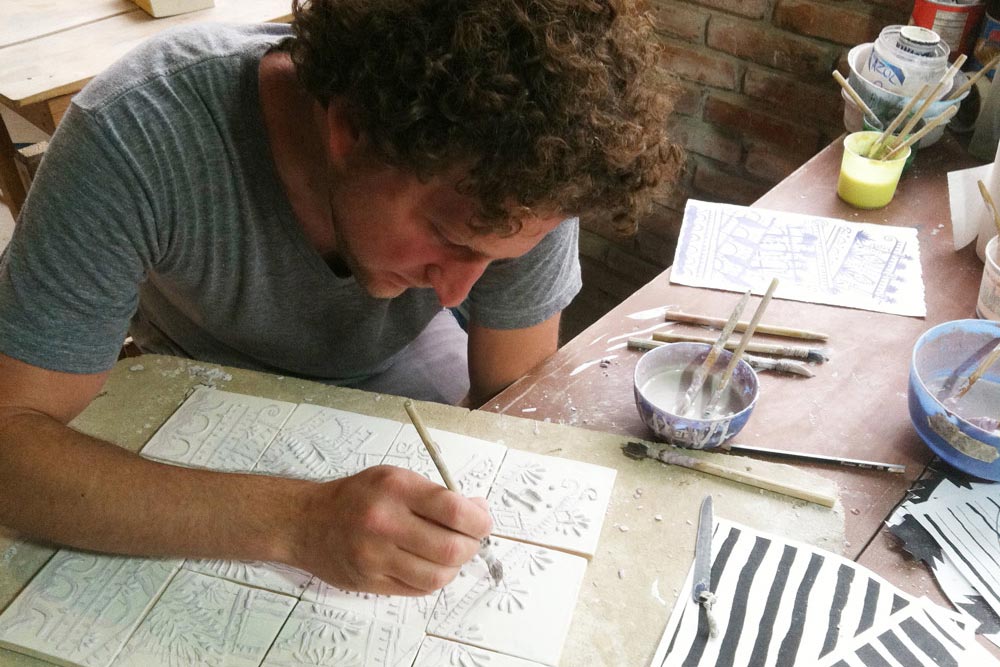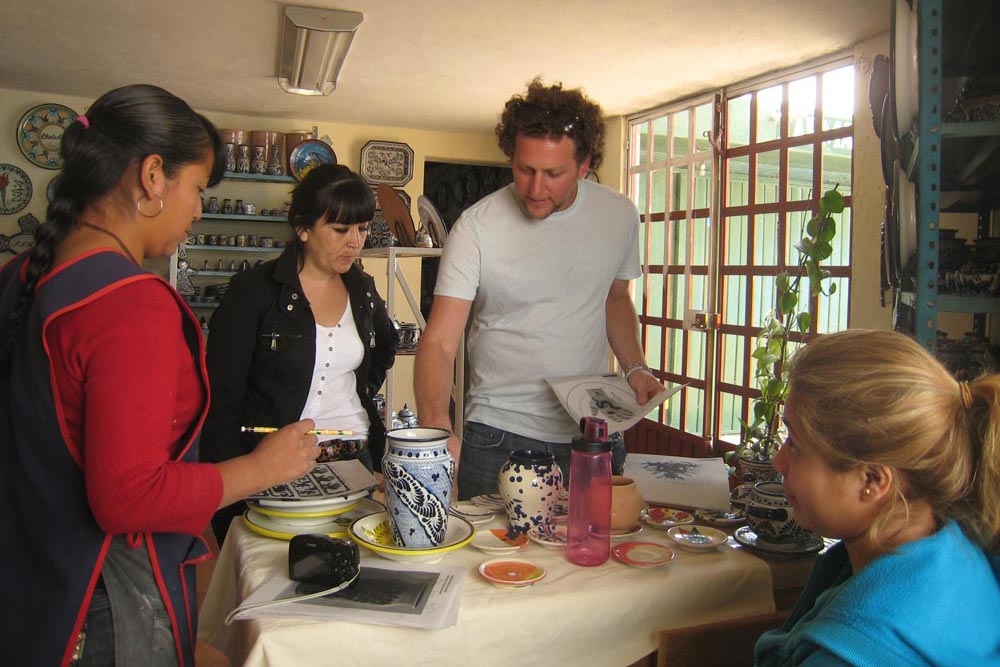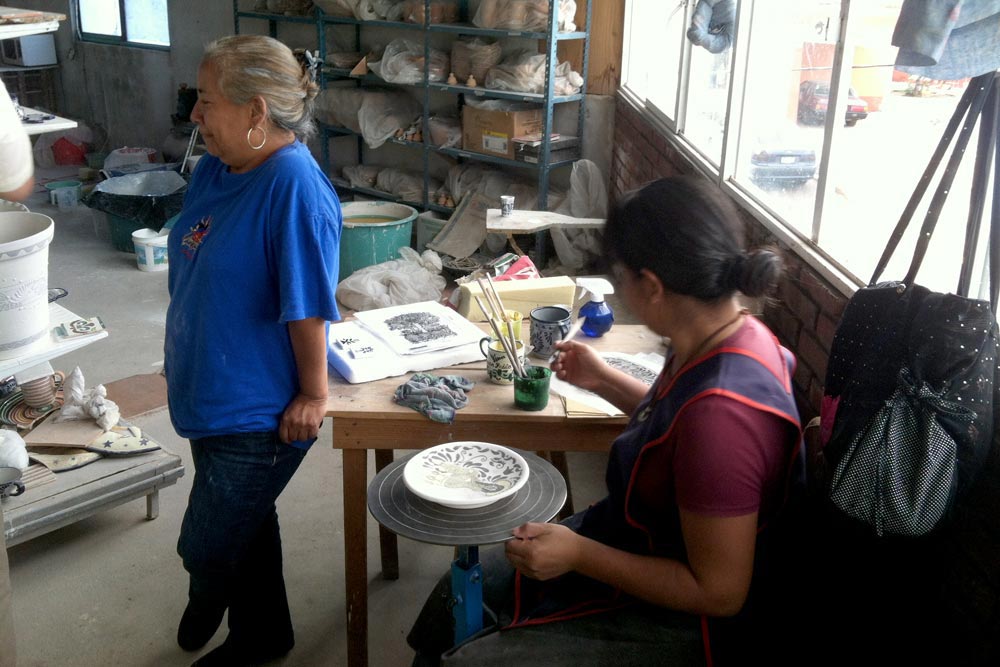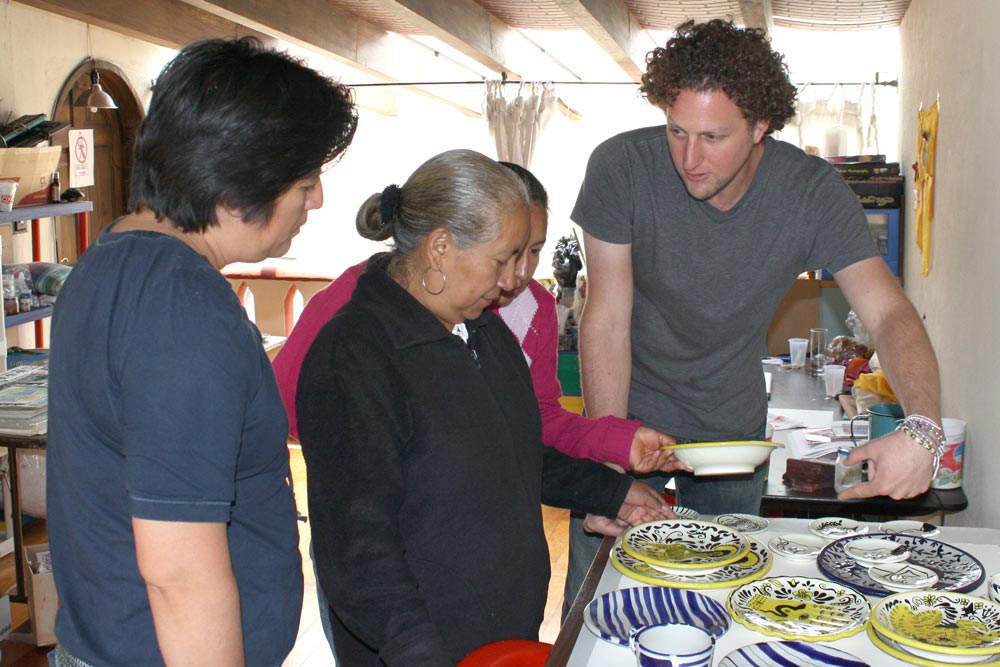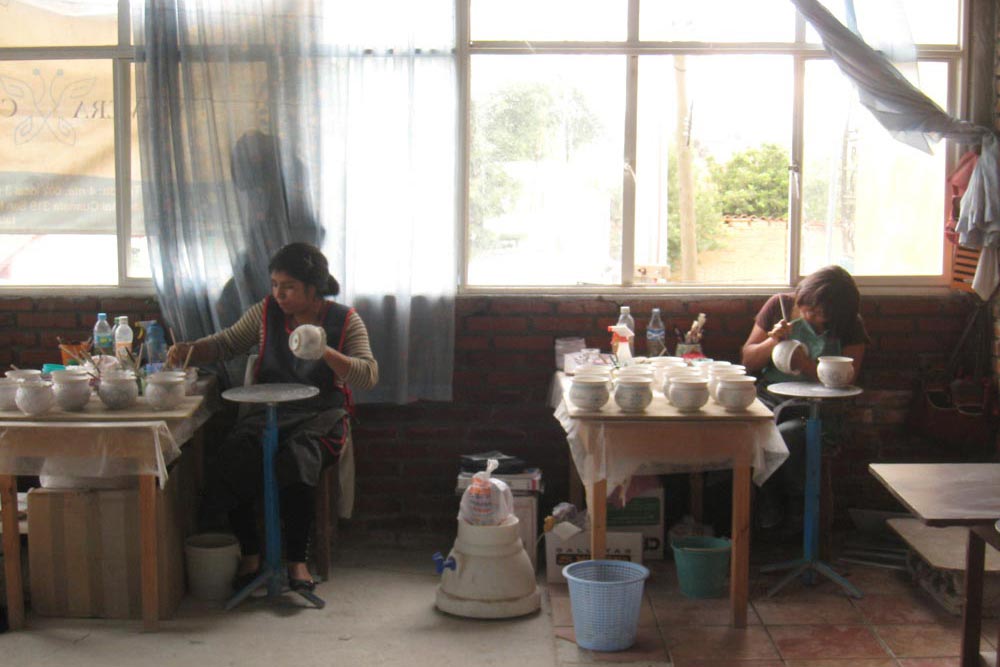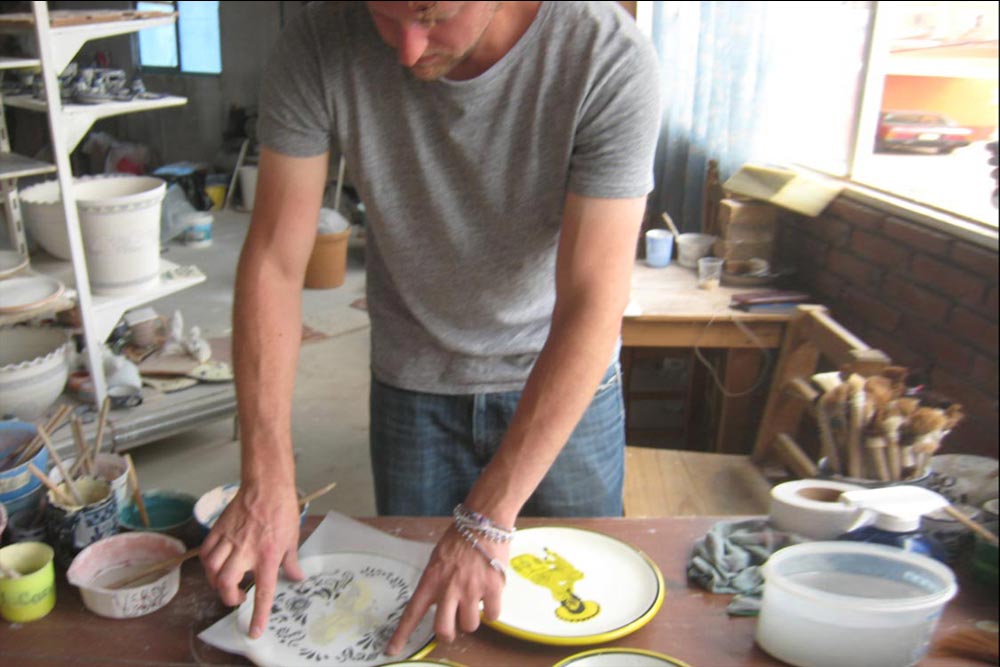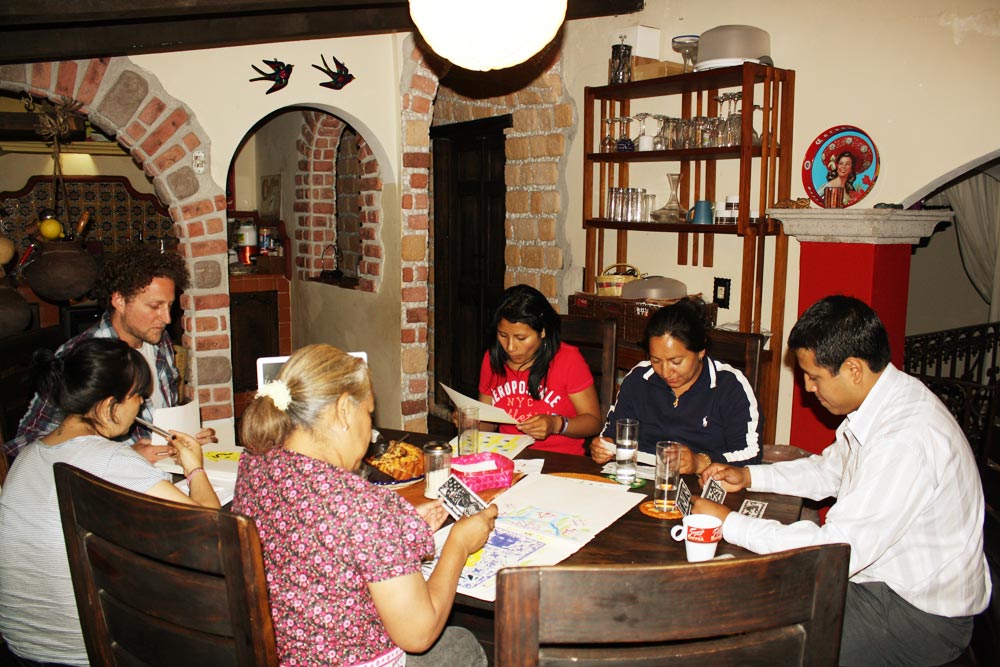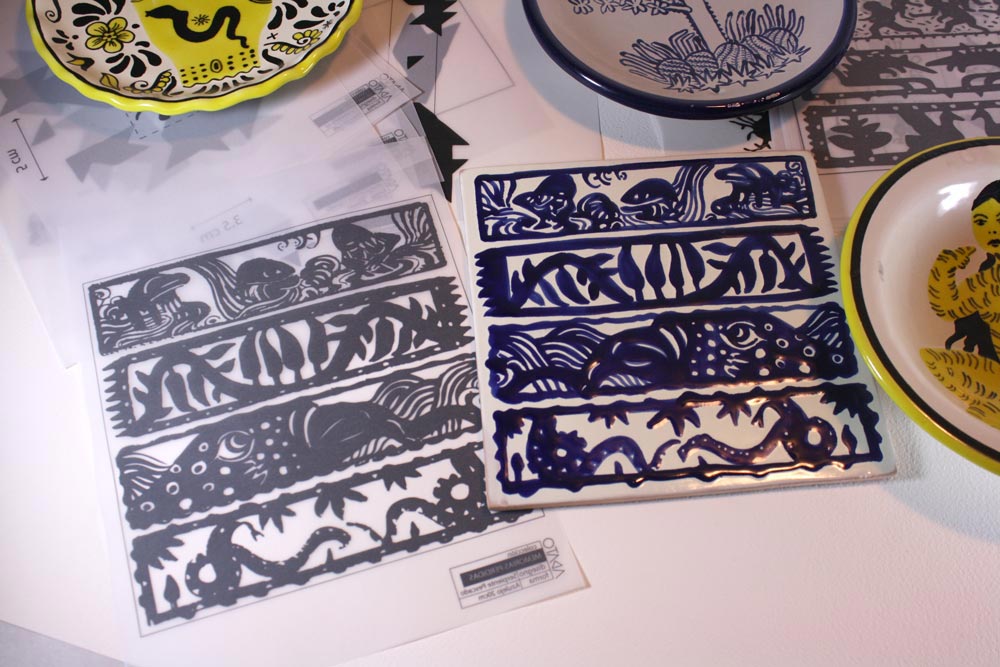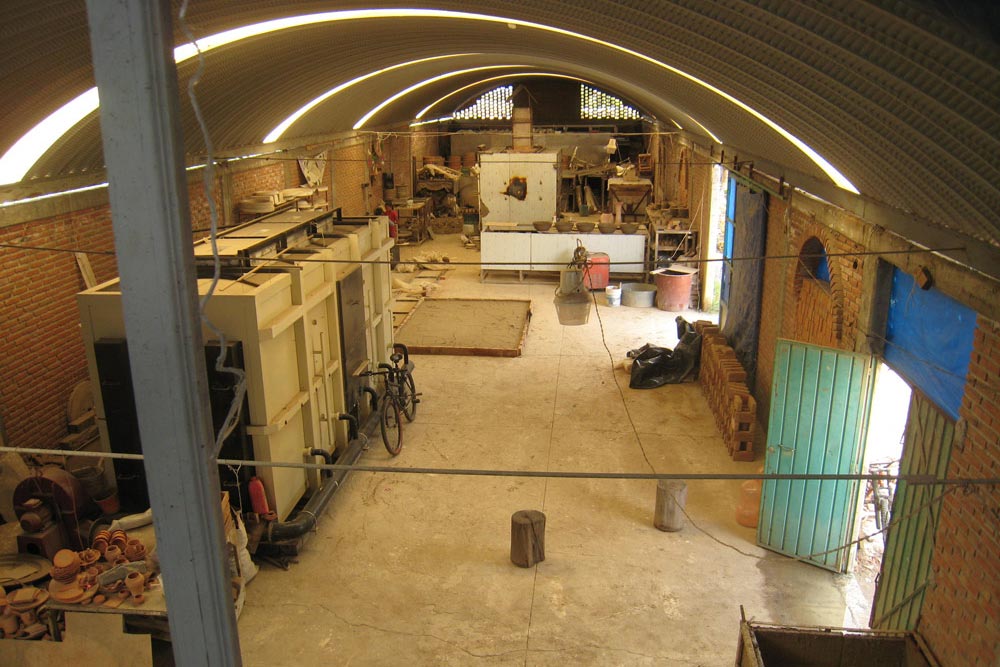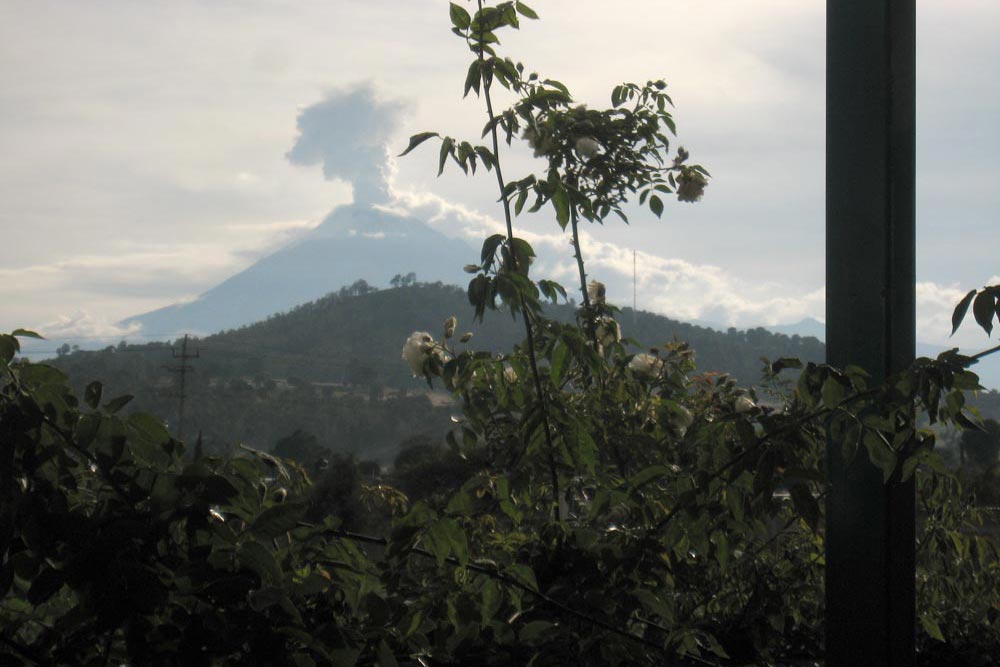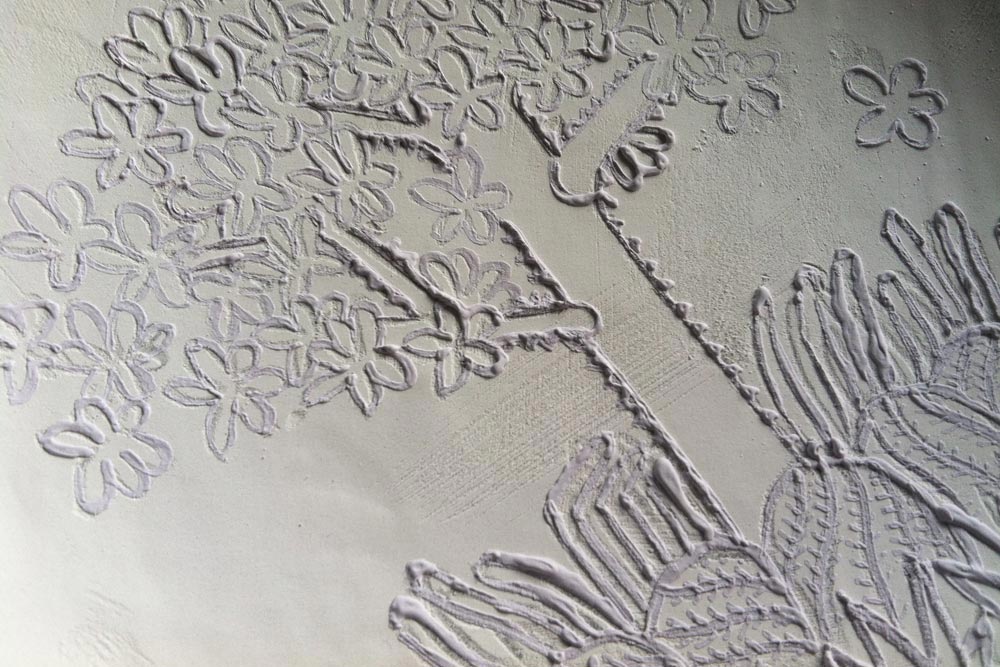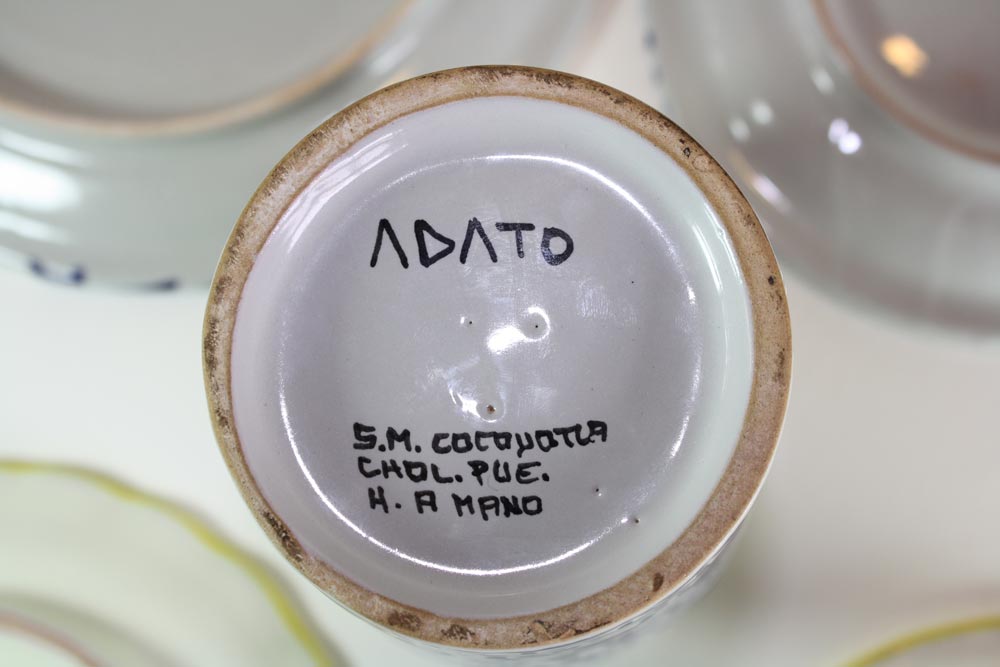In May 2012, through support from the artist in residence organization Arquetopia, I was invited to collaborate with Estudio San Matías Cocoyotla, a Talavera workshop in Cholula, Mexico. This collaboration began with my arrival in the city of Oaxaca known for its wide diversity of indigenous cultures, a perfect place to expose myself to the richness of Mexican culture, its art, crafts, colors and style. Splitting my time between combing the local markets, museums, ruins, and libraries and combining all these inspirations in the studio, I ended up with a series of themes to explore in the Talavera factory.
The Process
Once I arrived in Puebla, I spent time getting to know the factory and learning the intricacies of the process. I then adjusted my designs and adapted them to their production. Working closely with the talented potters and painters and digitally prototyping ideas to explore potential innovations, we arrived at a set of designs that would challenge the existing expectations of Talavera while still embracing the tradition. Several more rounds of refining these designs resulted in the collections of Talavera you see featured here.
About Talavera
Talavera is a physical fusion of the cultural legacy from which the artform developed. Moorish conquest of Spain brought with it the tradition of Islamic pottery which was adapted and evolved as it spread throughout Europe in medieval times. Hundreds of years later the technique was brought to Mexico during Spanish colonialization to be mixed with the rich traditions of cermaics widely employed by local pre-hispanic cultures.
This absorption of cultures and traditions continued as Talavera started appropriating Chinese motifs and then Italian to compete with imported goods which were becoming wide spread through out the Americas in the 1800’s. Talavera’s distinct appeal remains though it continues to evolve.

